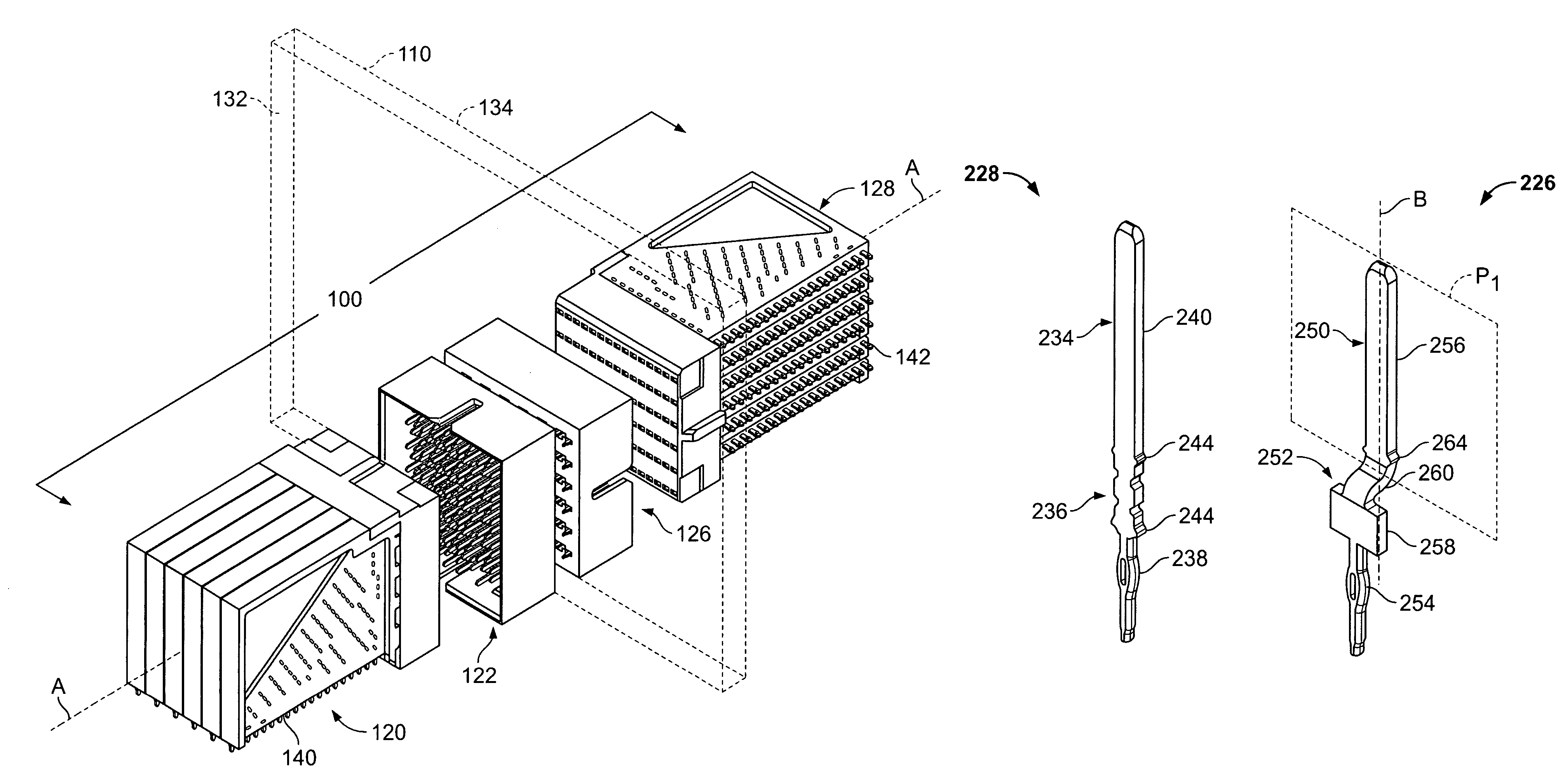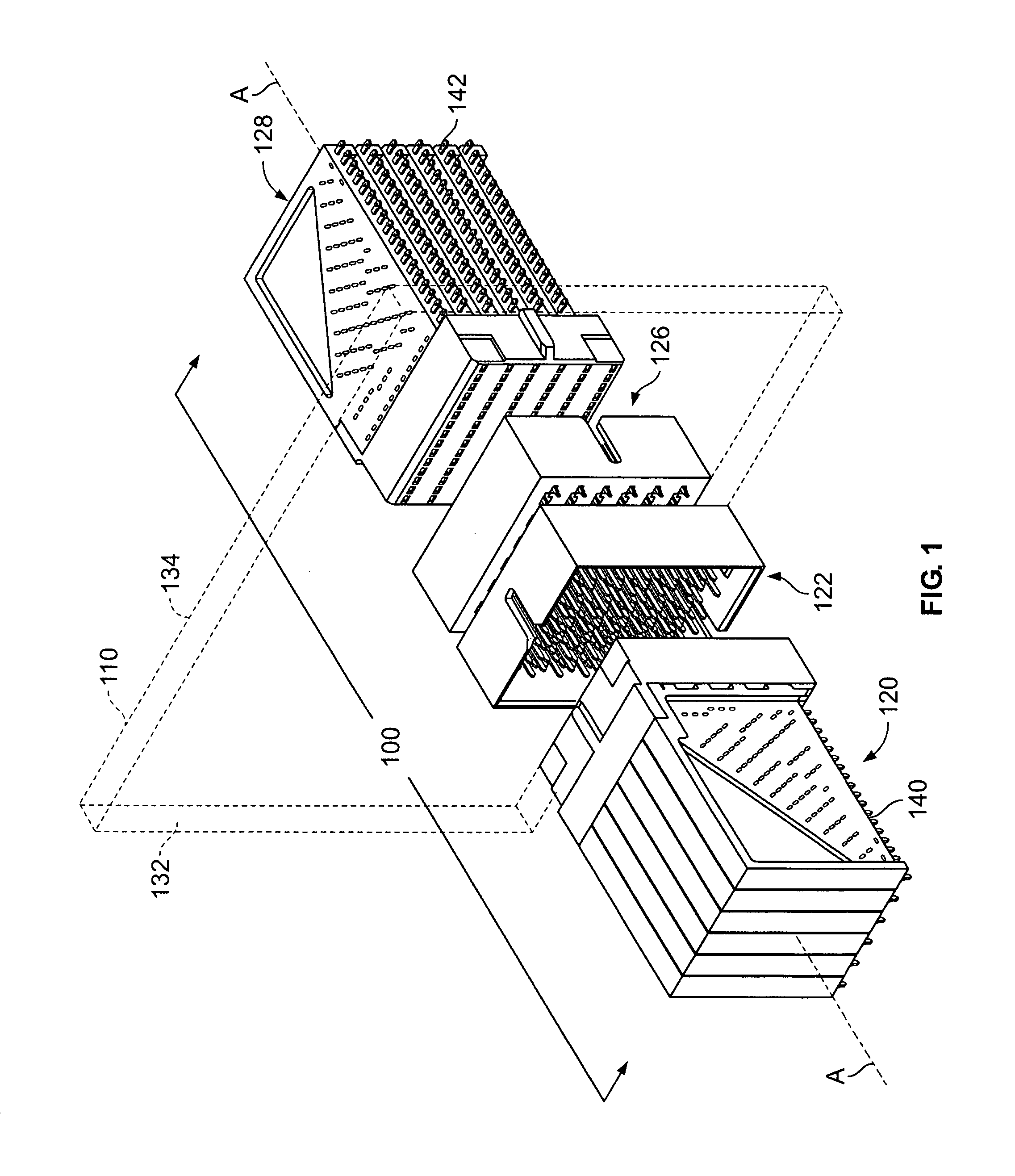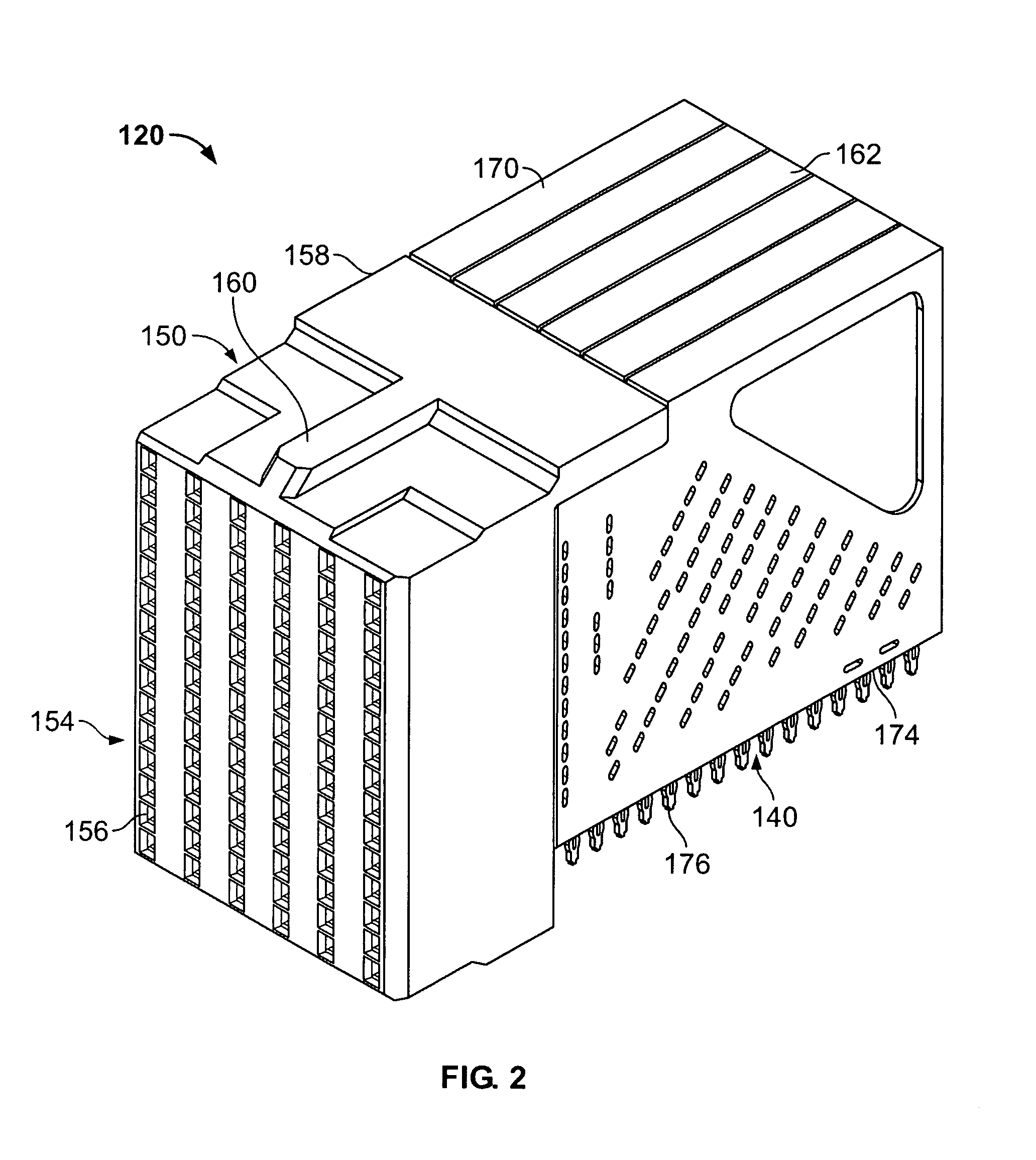Orthogonal connector
a connector and orthogonal technology, applied in the direction of connection contact member material, two-part coupling device, connection device connection, etc., can solve the problems of signal loss, inability to meet the requirements of the backplane, and inability to meet the requirements of the connection
- Summary
- Abstract
- Description
- Claims
- Application Information
AI Technical Summary
Benefits of technology
Problems solved by technology
Method used
Image
Examples
Embodiment Construction
[0018]FIG. 1 is a perspective view of an orthogonal connector system 100 mounted on a midplane circuit board 110 which is shown in phantom lines for clarity. The connector system 100 includes a first receptacle connector 120, a first header connector 122, a second header connector 126, and a second receptacle connector 128. The first header and receptacle connectors 122 and 120, respectively, are mounted on a first side 132 of the midplane 110 and connect through the midplane 110 to the second header and receptacle connectors 126 and 128, respectively, which are mounted on a second side 134 of the midplane 110.
[0019]The first receptacle connector 120 includes a daughter card interface 140. By way of example only, the first receptacle 120 may be mounted on a line card (not shown) at the interface 140. Similarly, the second receptacle connector 128 includes a daughter card interface 142 and, by way of example only, the second receptacle 128 may be mounted on a switch card (not shown) ...
PUM
 Login to View More
Login to View More Abstract
Description
Claims
Application Information
 Login to View More
Login to View More - R&D
- Intellectual Property
- Life Sciences
- Materials
- Tech Scout
- Unparalleled Data Quality
- Higher Quality Content
- 60% Fewer Hallucinations
Browse by: Latest US Patents, China's latest patents, Technical Efficacy Thesaurus, Application Domain, Technology Topic, Popular Technical Reports.
© 2025 PatSnap. All rights reserved.Legal|Privacy policy|Modern Slavery Act Transparency Statement|Sitemap|About US| Contact US: help@patsnap.com



